Operative versus non-operative treatment for the management of full-thickness rotator cuff tears
Rotator cuff tears can be a functionally debilitating injury for many. Surgery is often recommended to help decrease pain and return the patient back to their baseline function. But is surgery definitely needed in someone with a known rotator cuff tear? I originally discussed this for an article at Champion’s blog here and here

Photo by Piron Guillaume
Here’s my review and thought process for this paper…
Recent Systematic Review & Meta-analysis
A recent paper published in the Journal of Shoulder and Elbow Surgery attempted to clarify whether surgery or conservative treatment could deliver the best results 1 year after a diagnosis.
This group, from George Washington University Hospital’s Department of orthopaedic surgery, looked at level I and II studies to compare operative versus non-operative management of atraumatic rotator cuff tears through a meta-analysis.
After the initial search, 1013 articles remained for review. Of that, only 3 studies involving 269 subjects met the inclusion criteria and were included.
The inclusion criteria were as follows:
- randomized controlled trial
- full-thickness rotator cuff tear
- age 18 years or old
The exclusion criteria included:
- any history of rotator cuff surgery
- follow-up period of less than 1 year.
A good beginning but I’m always curious to know the percentage of people included in any study that:
- have diabetes
- smoke
- worker’s comp
…and we don’t have that information so I’m a bit skeptical already.
So moving on and am curious about the variables they’re looking at in this study. Coincidentally, they’re only looking at VAS pain rating and Constant scores. Furthermore, 1 study’s data is not valid because they used a different version of the Constant score rating instead of a VAS pain rating.
So, we now only have 2 studies looking at VAS pain rating. And for the record, I am not a huge fan of pain scales anyway. Feel like patients are not always accurate and accountable when self-reporting their pain. I would imagine a study may somewhat bias someone when reporting how they feel.
Moving on…
Surgery better than Rehab
The study’s results concluded:
“A greater improvement in Constant score was found in operative patients relative to patients treated nonoperatively, and this was statistically significant. The mean difference between operatively treated patients and nonoperatively treated patients was 5.64 (95% confidence interval, 2.06-9.21; P = .002).”
“Patients treated operatively had significantly decreased pain scores at 1-year follow-up as compared with the nonoperative cohort, with a mean difference in VAS score of − 1.08 (95% confidence interval, − 1.56 to − 0.59; P < .0001).”
So what does this mean?
Well, they went on to say and this is the key: “However, both values were below the minimal clinically important differences of 10.4 and 1.4 for the Constant and VAS scores, respectively.”
Surprising to many, including myself, because I have made a career in rehabbing patients after rotator cuff repairs. Surgery may just not be the obvious treatment choice for patients with atraumatic rotator cuff tears.
One must be concerned with the tear progressing and symptoms possibly worsening. Fortunately for the patient (unfortunate for the surgeon), the tear size does not correlate with pain and function. Surgery, although often successful, is no guarantee to restore function and pain better than physical therapy.
Study Limitations
Of course we must look at the self-proclaimed study limitations that are discussed and they definitely affect the study conclusions, in my opinion. The 3 studies included did not have a uniform grouping of rotator cuff tear types. One of the studies included supraspinatus only, while another included supraspinatus, infraspinatus, and subscapularis. Yikes!
One study also had a subset that included traumatic rotator cuff tears, which may have influenced the positive surgical outcomes reported.
Post-operative and non-operative physical therapy did not follow a standard protocol. This may affect the outcomes significantly!
Finally, the type of surgery performed varied in each study. Two of the 3 studies utilized an open or mini-open approach which is pretty outdated at this point. The other study used an arthroscopic approach to fix the rotator cuff tear.
My Conclusions
Although many had advocated for early surgical intervention for a rotator cuff tear, the literature continues to display an alternative treatment approach. Physical therapy may offer an equivalent, albeit a cheaper strategy, to atraumatic rotator cuff tears.
This paper tries to present a case for surgical intervention as a key to success but I am still not convinced. A patient with a diagnosis of a rotator cuff tear should definitely have a trial of physical therapy to see if they can get improvements in their pain and function.
I have outlined a typical rotator cuff rehabilitation progression in a previous blog post. Check it out and let me know what you think!
https://lennymacrina.com/simple-steps-rotator-cuff-rehabilitation/

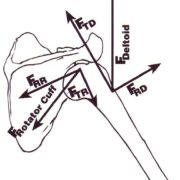
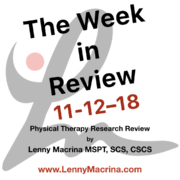
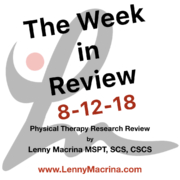
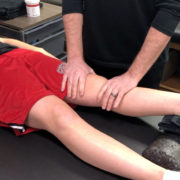
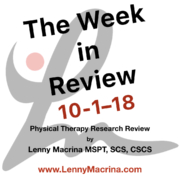
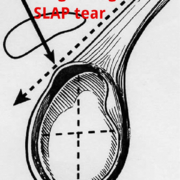
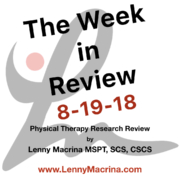


Leave a Reply
Want to join the discussion?Feel free to contribute!